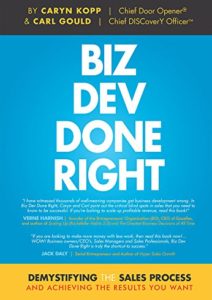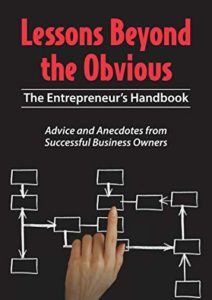Picture this: you’re meeting with your dream prospect. It’s the meeting which took months to land, the one which could lead you to make your challenging sales goals this year. As the conversation progresses and the prospect shares more about what he needs, you start to develop an uneasy feeling that what you have to offer is not the perfect fit. As you probe deeper, you confirm your suspicion. What do you do?
The ethical decision is to decline the work and refer your dream prospect to someone else who is the right fit. But not all people take this route. Why?
The Pressures That Tempt a Bad Ethical Decision
Sellers may convince a prospect to go ahead with a product or service when the fit isn’t right because of:
- Big pressure to achieve a sales goal including; loss of job, loss of money, loss of reputation, loss of a business, need to meet overhead
- An empty pipeline which makes each prospect that much more important to close
- Longer than anticipated sales cycle time
Consequences for the Client
When a seller ignores signs of bad fit and convinces clients to proceed anyway there is a price to pay – and it is not just a financial one. Clients who have placed faith in the seller and don’t get the results they expect will begin to doubt the seller. They may cancel or refuse to pay. They won’t return for more and may spread the word about their unhappiness. When trust evaporates, it is almost impossible to restore.
How to Avoid a Bad Ethical Decision
- Ask the right questions at the beginning of the relationship and listen for fit
Posing “high gain” questions to elicit the prospect’s needs and the prospect’s urgency will help ensure the products and services you have are the exact fit.
Sometimes prospects don’t know what they need. While a decision maker may identify one set of problems, upon further questioning, the savvy seller will be able to uncover the real issue, the real need.
Listen for fit, not just for opportunity. If you don’t hear it be honest with yourself and your prospects. You will have better relationships with your prospects if you do. - Cultivate relationships with other companies who could be the right fit for the client
When you believe you are not right for the client, one good approach is saying, “That’s not in our wheelhouse, but I know somebody who does that. I will make a personal introduction for you.”
Recently, a prospect came to me saying he needed our Door Opener® Service because he wanted to meet high-level executives in a new market. However, upon further discussion, he shared that he had not yet updated his website or marketing collateral to support the new initiative. Knowing that having these items ready to go was important to a successful door opening program, I told him he was not quite ready for us and then connected him with someone I trust who owns a marketing firm. When this work is finished, he will be ready for us.
Connect your prospect with your colleague by email so they can communicate directly. It makes sense to have strategic alliances with people with whom you are likely to need to refer business, so when the time comes you already know your top pick. It’s important you are confident that the person you choose will take great care your prospects and know when to get you back involved. A nice bonus is that these referral partners will likely refer business back to you!
3. Be observant as a relationship continues for signs of a bad fit
After you’ve been working with a client for a while, you may uncover new needs that you cannot address. Don’t get caught up in desire to try to make the situation work. While it may be tempting to alter your offering to fit the need, if it is not a good fit, your client deserves to know.
Being attuned to the risks of making bad ethical decisions will keep you focused on what is most important – your prospect! It will also enable you to maintain trust which is the healthy foundation of any business relationship. When you focus on the health and depth of your relationships, the money follows!














Comments